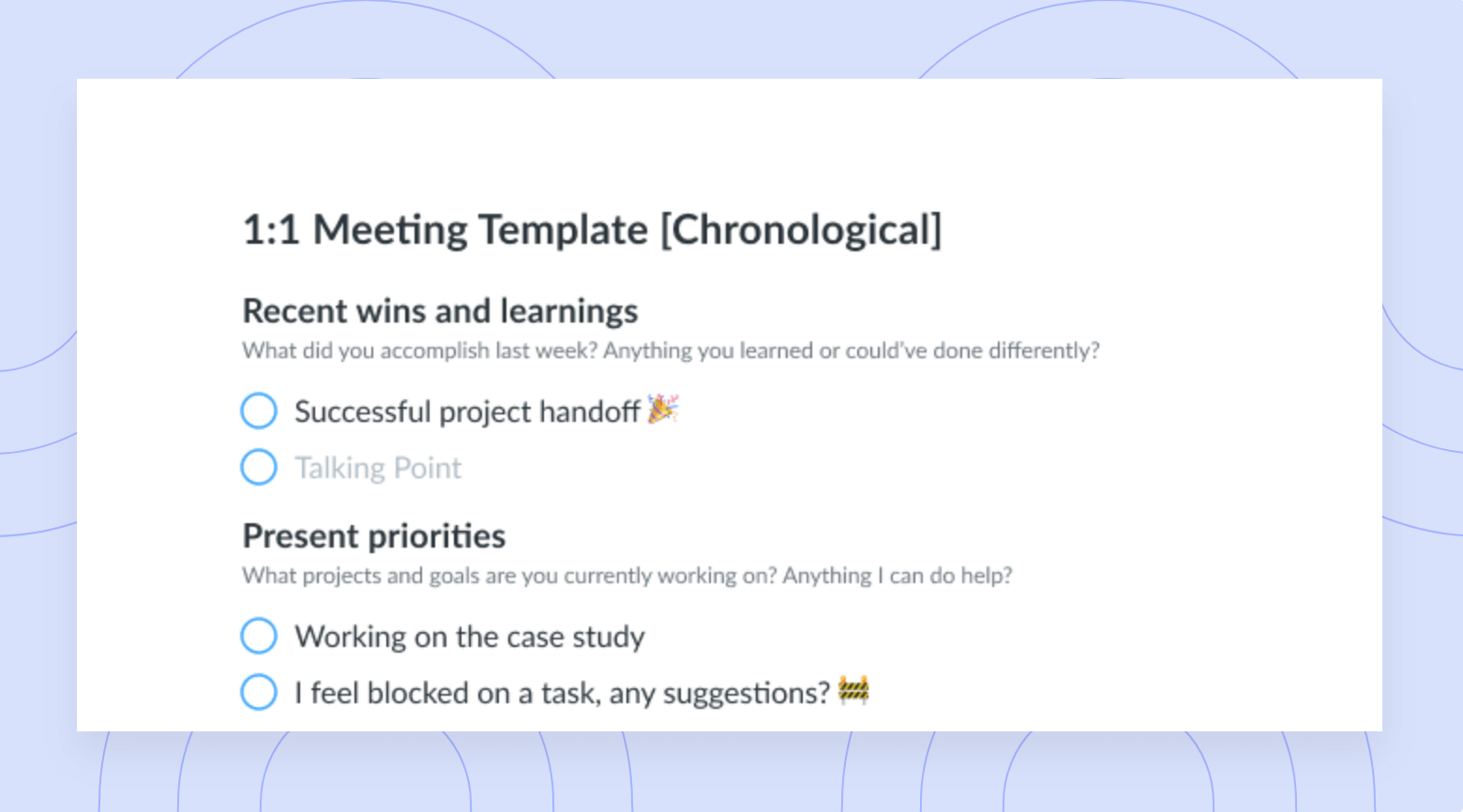
Check-In Meeting Template
Get this templateHaving effective check-in meetings with your direct reports will keep you up to date on all important topics such as challenges, learnings, and feedback.
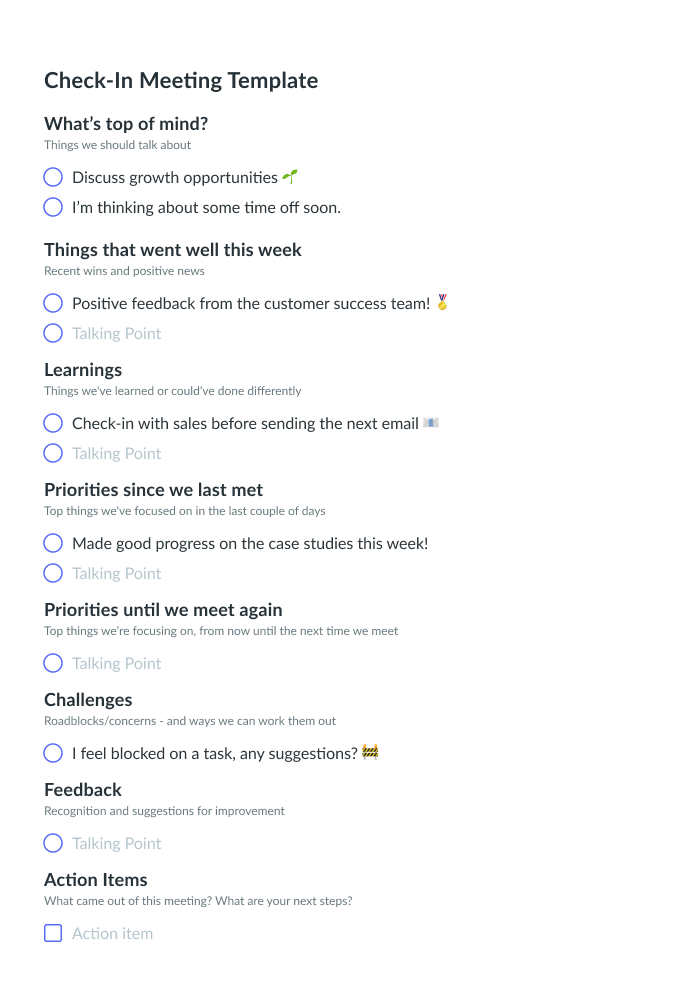

Check-in meetings are the ideal opportunity for managers and direct reports to talk about challenges, learnings, and feedback. After years of research on this topic, we’ve created a template with 7 key topics that you should discuss during these meetings:
1. What’s top of mind
2. Things that went well this week
3. Learnings
4. Priorities since we last met
5. Priorities until we meet again
6. Challenges
7. Feedback
Having these 7 headings ready in your check-in meeting template isn’t only a great way to save time, but also a good reminder of the things you should be talking about during these meetings.
Remember that some headings might not get talking points every week – and that’s ok!
What’s inside this Check-In Meeting Template:
1 What’s top of mind?
Start every one-on-one discussing the things that are top of mind for your direct report. These could be all the random questions that they wrote throughout the week, important updates, or personal news.
This is also the perfect moment to ask rapport-building questions about your direct report’s hobbies, level of engagement/happiness and life outside of work.
2 Things that went well
There’s a very specific reason why you should include this heading (which could also be called Wins or Highlights) in your one-on-one template. According to Sally Helgesen, leadership coach and author, some people – notably women – don’t bring up milestones and important things they experience at work with their managers.
Having a section where your direct report describes the things that went well during the week will foster some great conversations about their strengths and accomplishments. On one hand, it will increase your direct report’s self-awareness and ability to reflect on their wins. On the other, it will help you recognize them for their good work and stay in the loop about their contributions to the team.
One-on-one meetings are better in Fellow
Fellow is the meeting management app that companies like Shopify, Uber, and KeepTruckin use to run effective one-on-one meetings.

3 Learnings
Sydney Finkelstein, the author of The Superbosses Playbook, has studied world-class leaders for more than a decade. One of his biggest takeaways is that great leaders are also great teachers:
“Star managers emphasize ongoing, intensive one-on-one tutoring of their direct reports, either in person or virtually, in the course of daily work,” says Finkelstein.
Inquiring about your direct report’s learnings (or having a heading that encourages them to write their learnings every week) will help you coach them on their work and most importantly, promote a growth mindset across your team.
4 Priorities
One of your main responsibilities as a manager is making sure that your team is allocating their time wisely and working towards the same vision. You can do this by asking your direct reports about their priorities.
Having a priorities heading will remind you to spend some time reviewing and reorganizing your direct report’s projects, and finding ways to help them be more productive.
It’s also a great segue to talk about roadblocks.
5 Challenges and concerns
Ask your employees about the roadblocks that stand in their way. This will help you identify problems, such as processes that are not working well or internal issues that are slowing your team down.
You can also ask your direct reports about the parts of their job that annoyed or frustrated them in the past week. This will help you understand what each employee dislikes, and find ways to help with those aspects of their job (perhaps by delegating those tasks to someone else or finding ways to automate them).
6 Team dynamics
In this section, you can ask employees about their relationships with their fellow teammates. Some questions you can ask employees to measure your team culture include:
– How is the team doing?
– Do you have any suggestions on the way the team works together?
– Are co-workers exchanging enough feedback, or would you like to hear more feedback from other people on the team?
In Radical Candor, Kim Scott argues that a team’s culture has an enormous impact on its results. That’s why great managers ask about team dynamics and look for ways to foster positive relationships amongst their reports.
Quick reminder: Even though part of your job as a manager is to uncover issues that might be affecting the team, you should never encourage “backstabbing.”
“Never let one person on your team talk to you about another behind their back. It feels like you’re being empathetic to listen, but actually you’re just stirring the political pot. Instead, insist that they talk directly to each other, without you,” says Scott.
7 Feedback
Creating a culture of ongoing feedback should start with your one-on-ones. Use this section to ask for feedback, recognize your employees for their great work, and share recommendations on how they can improve.
“Feedback is a gift. It costs time and effort to share, but when we have it, we’re better off. So let’s give it generously.”
– Julie Zhuo, The Making of a Manager
This one-on-one meeting template was originally published in The Art of the One-on-One Meeting: The definitive guide to the most misunderstood and yet powerful tool for managers.









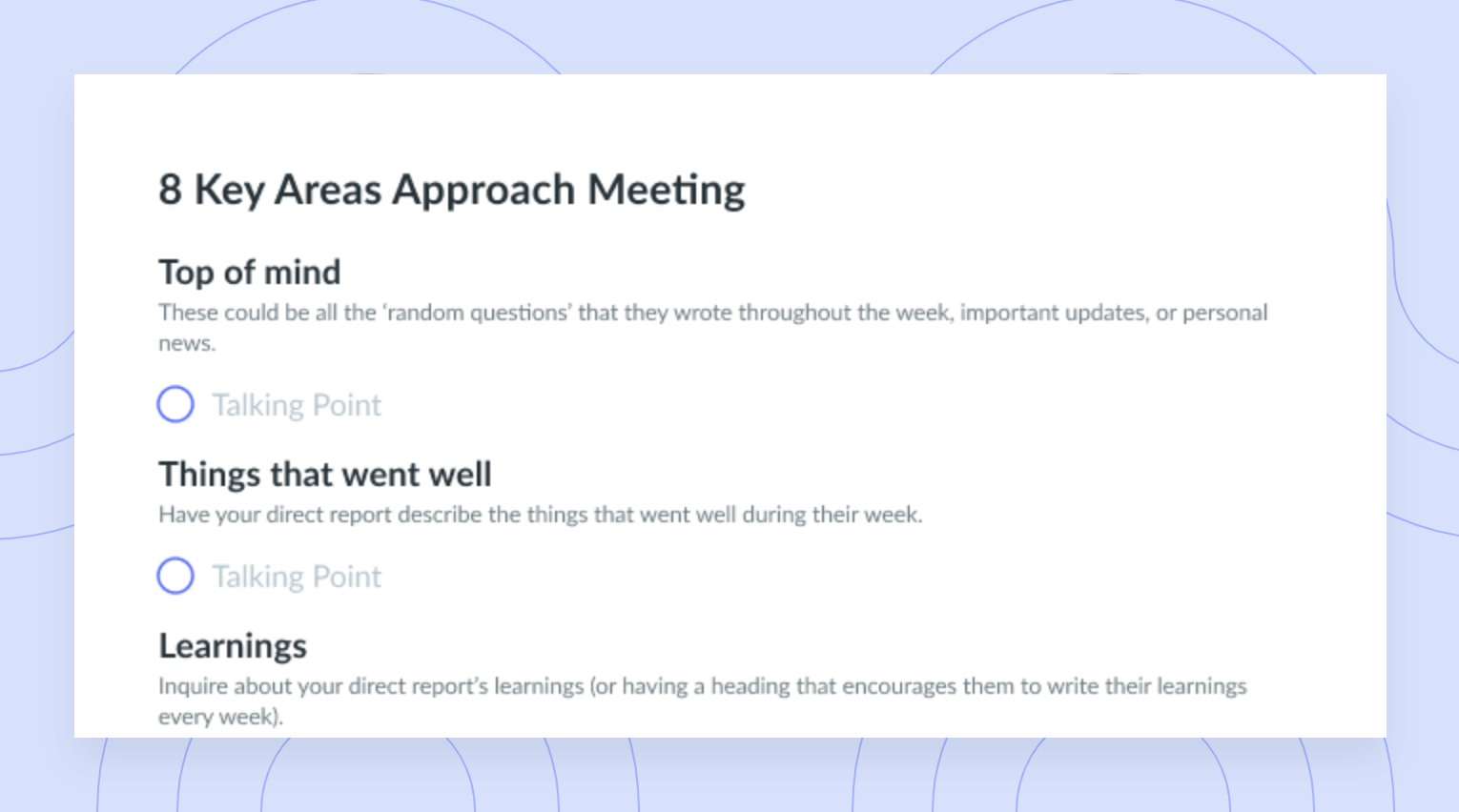
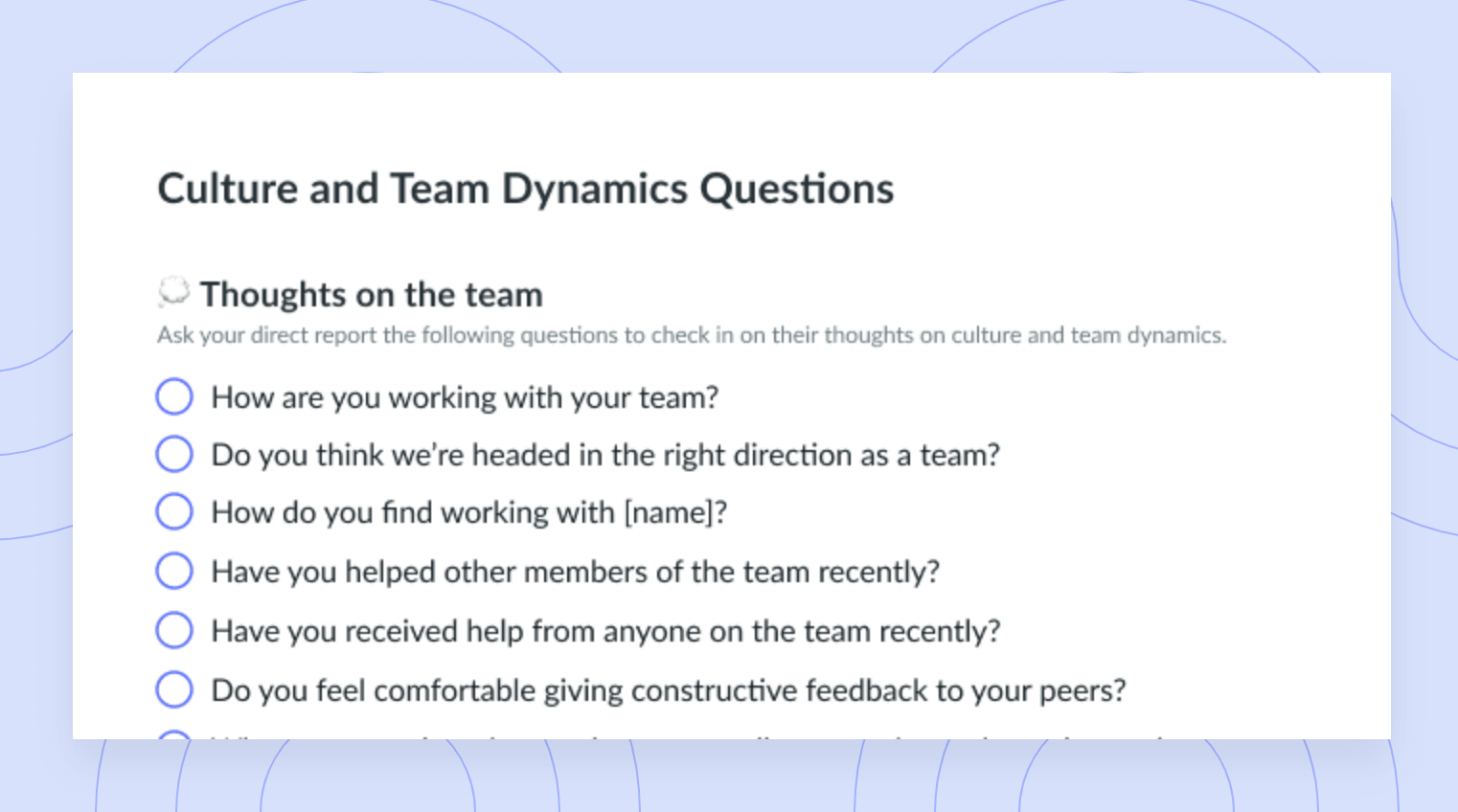
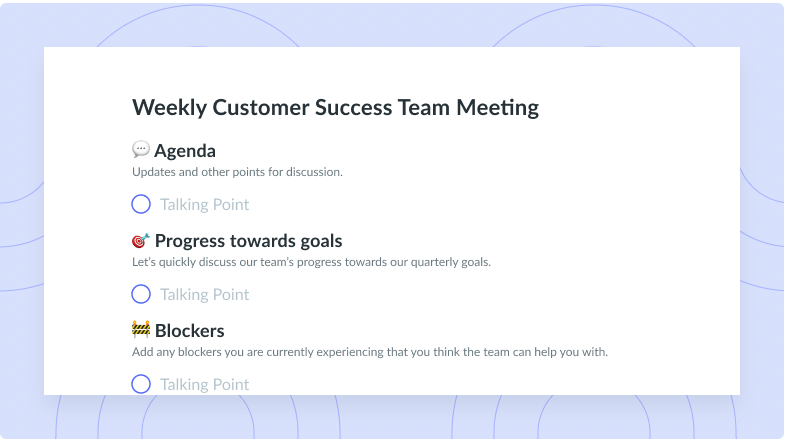
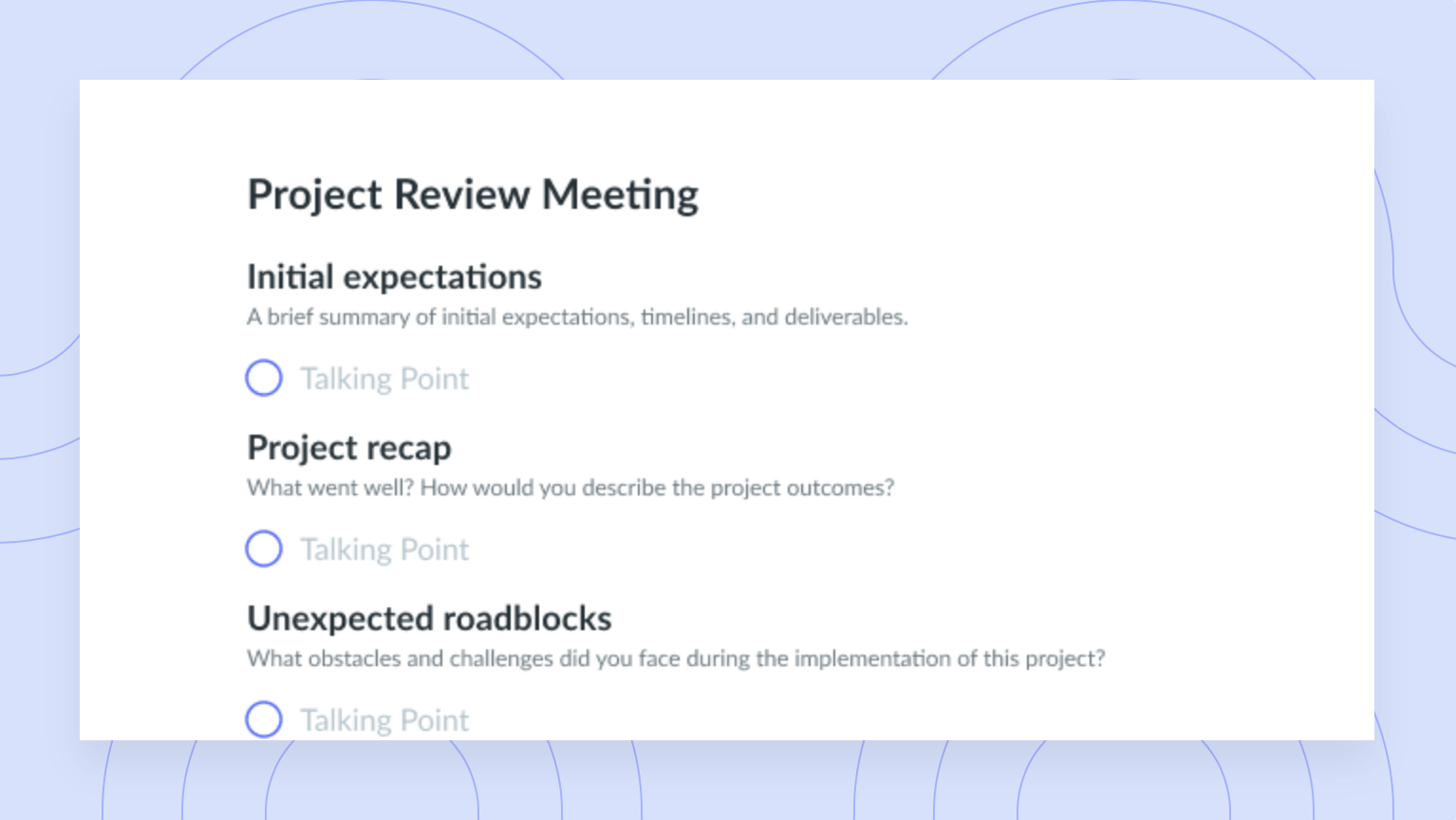

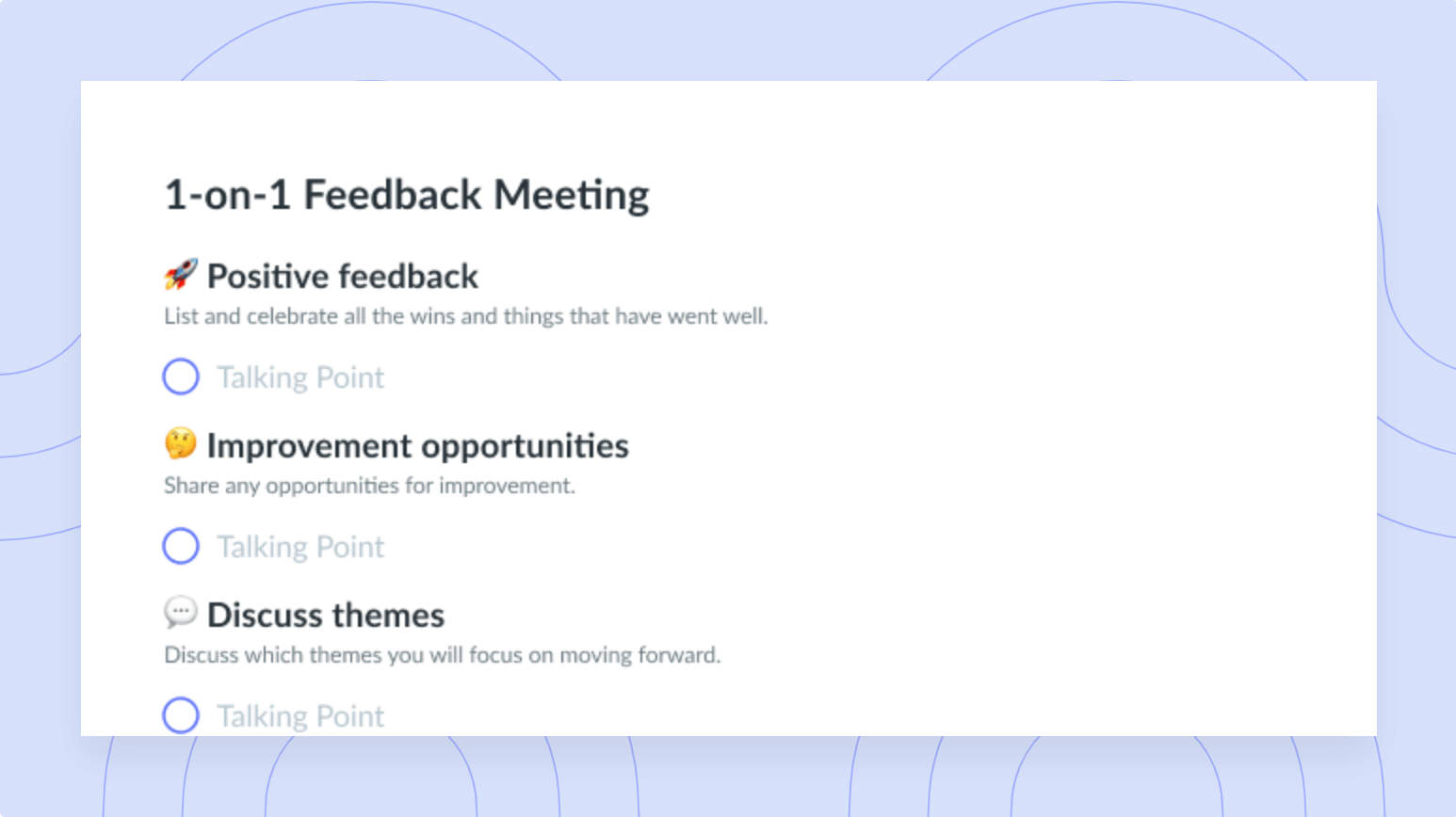
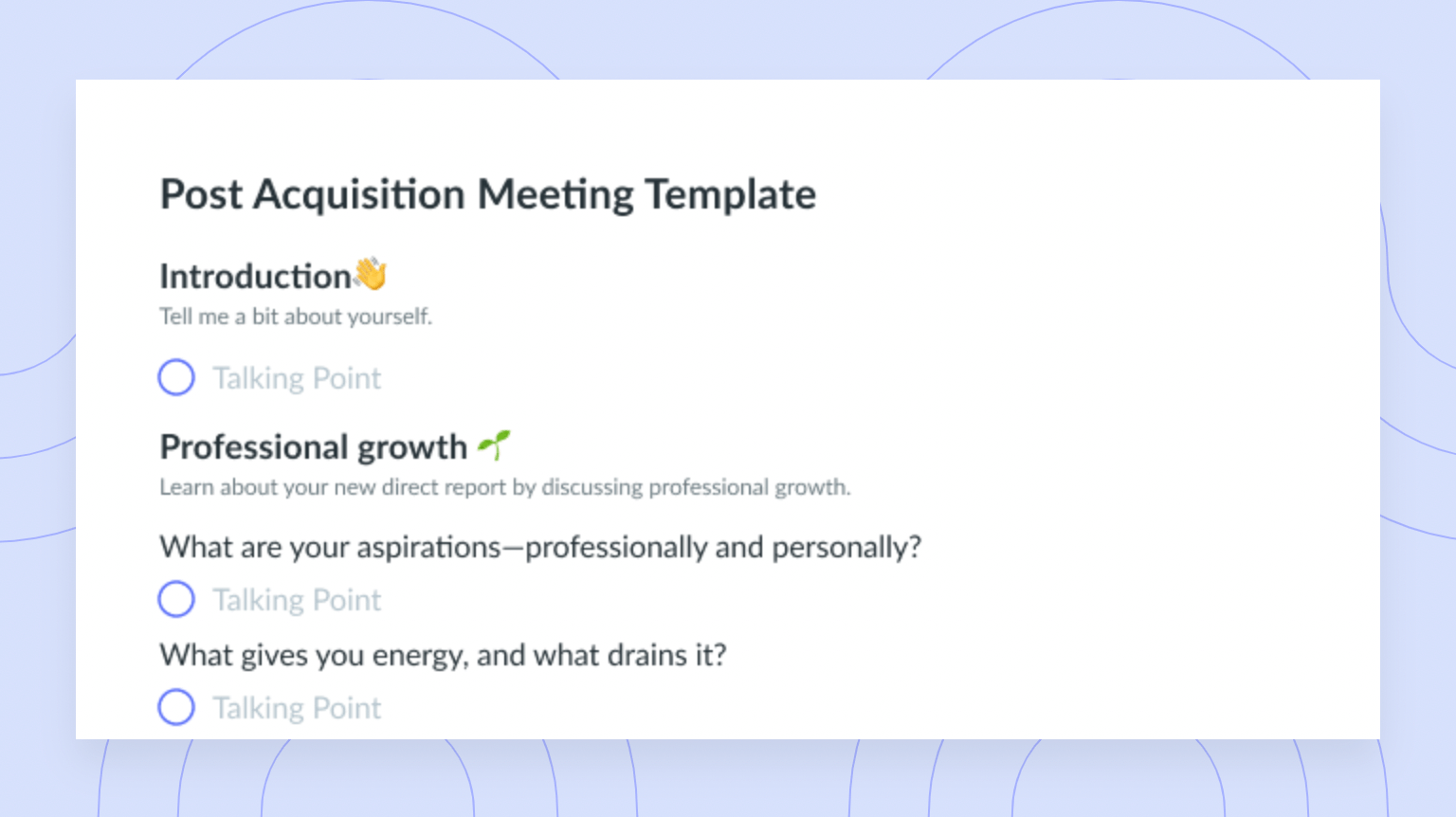
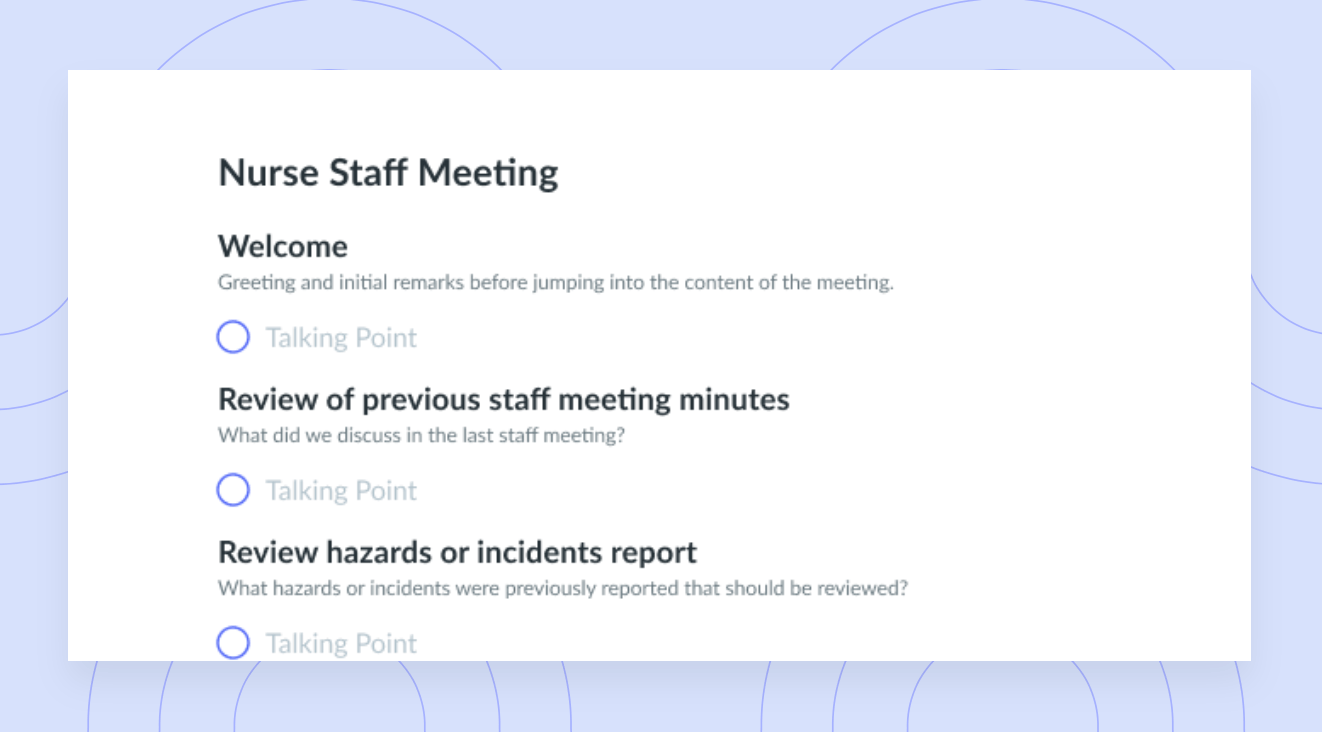




![How Many Direct Reports Should a Manager Have? [+ Free Template]](https://fellow.app/wp-content/uploads/2022/06/How-Many-Direct-Reports-Should-a-Manager-Have-2.jpg)

![13 Tips for CEOs on Meeting With Staff [+ Free Templates]](https://fellow.app/wp-content/uploads/2023/01/CEO-meetings-with-staff.jpg)

